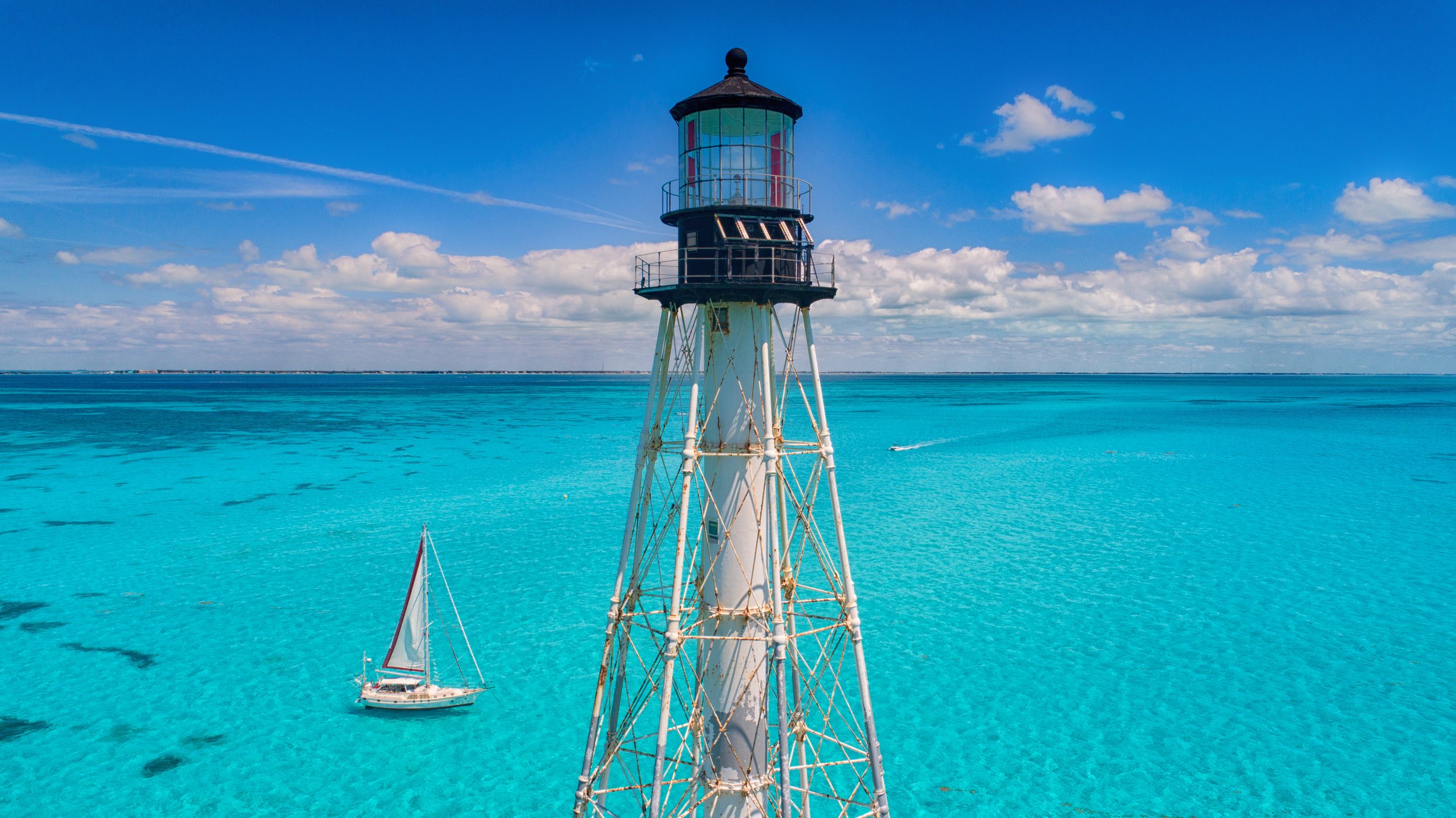

Please wait..


Please wait..

30 Dec 2024 Blogs
Nestled in the turquoise waters off the coast of Islamorada, Florida, stands the iconic Alligator Reef Lighthouse. A testament to the maritime history of the Florida Keys, this structure has been guiding sailors and inspiring onlookers for over a century. Its history is as rich as the coral reef it protects, and its legacy continues to shine, literally and figuratively.
Despite its name, Alligator Lighthouse has nothing to do with the reptile that frequents Florida's swamps. Instead, it derives its name from the U.S. Navy schooner Alligator, which ran aground on the nearby reef in 1822. The ship, on a mission to combat piracy, was deliberately scuttled after efforts to free it from the reef failed. This event marked the beginning of the area's association with the name "Alligator."
By the mid-19th century, the Florida Keys had become a busy maritime route, thanks to the growing trade between the Gulf of Mexico and the Atlantic. However, the treacherous coral reefs, including the Alligator Reef, posed a significant hazard to ships. Wrecks were frequent, prompting the U.S. government to construct a series of lighthouses in the region to prevent maritime disasters.
Alligator Reef Lighthouse was completed in 1873, standing on a foundation of iron pilings that rise directly from the reef. The lighthouse is a skeletal tower design, a common architectural style for reef lighthouses of the period. Its 136-foot structure includes a central spiral staircase, living quarters for keepers, and a lantern room at the top that housed its beacon.
The lighthouse's Fresnel lens, a groundbreaking optical technology at the time, allowed its light to be seen from up to 15 nautical miles away. For decades, this beacon was a critical navigational aid for sailors navigating the Keys.
Before automation, Alligator Lighthouse was manned by keepers who faced challenging conditions. Living quarters were cramped, storms were frequent, and isolation was a constant companion. Yet, these individuals diligently maintained the light, ensuring the safety of countless ships and their crews.
By the mid-20th century, advancements in technology rendered traditional lighthouses less essential. Alligator Reef Lighthouse was automated in the 1960s, eliminating the need for keepers. However, as newer navigation technologies emerged, the lighthouse's role diminished further.
Today, the structure is no longer operational as a navigational aid. It stands as a historical monument and a beloved icon of the Florida Keys.
Surrounding the lighthouse is the vibrant Alligator Reef, a marine sanctuary teeming with life. Snorkelers and divers flock to the area to explore the coral gardens and encounter colorful fish, sea turtles, and other marine creatures. The lighthouse, while weathered, remains a striking centerpiece amidst the natural beauty.
The years have not been kind to Alligator Lighthouse. Exposure to saltwater and storms has taken its toll on the structure. Local organizations and historians have rallied to preserve this piece of maritime history. Efforts are ongoing to restore and protect the lighthouse for future generations.
Alligator Reef Lighthouse is more than just an architectural relic; it is a symbol of resilience and history. Its story intertwines with that of sailors, shipwrecks, and the evolution of navigation. Whether admired from a boat or explored underwater, the lighthouse continues to captivate and inspire, standing tall as a sentinel of the sea and a reminder of Florida's rich maritime heritage.
If you ever find yourself in the Florida Keys, take a moment to gaze upon this historic beacon. Its light may no longer shine, but its legacy illuminates the past, present, and future of the region.